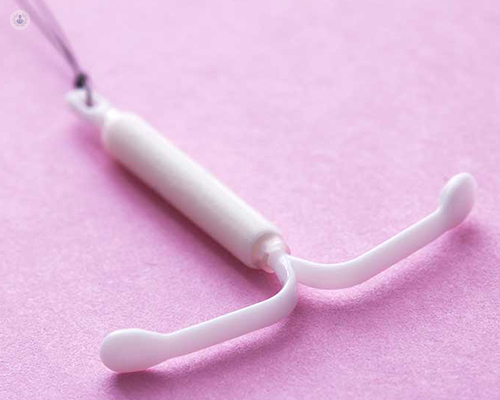Intrauterine device (IUD): one of the most effective forms of contraception
Written by:The intrauterine device (IUD) is one of the best forms of birth control methods. It is a small plastic or copper device in the shape of a ‘T’, which is inserted into a woman’s uterus.

Which IUD is best for me?
Even though there are different types of IUDs they can be divided into two categories: hormonal (made from plastic) and non-hormonal (copper). The hormonal IUDs work by releasing the hormone levangestrol, which thins the womb lining to make it less attractive for an egg. The non-hormonal IUD produces an inflammatory response that is toxic to sperm. The copper affects sperm mobility and the sperm’s ability to implant into the womb. When a woman has to decide between the two types, it is most important to consider their period and how much they bleed. This can be discussed with a GP or gynaecologist.
How effective is the IUD?
According to research, IUDs with copper are more than 99% effective. This means that one in 100 women will get pregnant in one year. Hormonal IUDs will be slightly less effective but still remain one of the best birth control methods.
What are the benefits of the IUD?
The higher the hormonal dosage, the more likely that the period will become lighter or stop altogether. Some women may prefer this, especially those who experience heavy periods. The IUD lasts for three to five years. Once the IUD is removed, fertility will return to normal.
What are the side effects of the IUD?
There is a chance that some women may have spotting, heavier and irregular periods during the first three to six months of insertion. Women who do not want their periods to change should consider the non-hormonal IUD, as the copper coil is less likely to change bleeding patterns. It is known to make periods heavier during the first few months of insertion before settling down. For those who already have a heavy period, the copper IUD is not the best idea. There is also a very small chance of pelvic infections within the first 20 days of the coil being fitted.
When is the best time to have the coil fitted?
The IUD can be inserted any time during the menstrual cycle as long as a woman is not pregnant. A gynaecologist will hold an examination of the womb to find out the size, position and make sure that the IUD is fitted into the correct place.
Where is the IUD placed?
The vagina is held open, as it would be during a cervical screening test (smear test), and the IUD is inserted through the cervix and into the womb. This is an uncomfortable and painful process and a patient may experience cramps afterwards. However, it is possible to ask for a local anaesthetic or painkillers before the fitting. The insertion takes about 15-20 minutes.
Will the IUD stop periods?
In the initial phase of using the hormonal IUD, the period comes more often and lasts longer for the first three to six months. It may then start to space out or go away altogether. The copper non-hormonal IUD does not stop periods. When considering whether to have the IUD fitted, and which one would be the best option, it is advised to get an expert opinion.


